Shunting for idiopathic normal pressure hydrocephalus
- PMID: 39105473
- PMCID: PMC11301990
- DOI: 10.1002/14651858.CD014923.pub2
Shunting for idiopathic normal pressure hydrocephalus
Abstract
Background: Normal pressure hydrocephalus (NPH) occurs when the brain ventricles expand, causing a triad of gait, cognitive, and urinary impairment. It can occur after a clear brain injury such as trauma, but can also occur without a clear cause (termed idiopathic, or iNPH). Non-randomised studies have shown a benefit from surgically diverting ventricular fluid to an area of lower pressure by cerebrospinal fluid (CSF)-shunting in iNPH, but historically there have been limited randomised controlled trial (RCT) data to confirm this.
Objectives: To determine the effect of CSF-shunting versus no CSF-shunting in people with iNPH and the frequency of adverse effects of CSF-shunting in iNPH.
Search methods: We searched the Cochrane Dementia and Cognitive Improvement Group's register, Cochrane Central Register of Controlled Trials (CENTRAL), MEDLINE (Ovid SP), Embase (Ovid SP), PsycINFO (Ovid SP), CINAHL (EBSCOhost), Web of Science Core Collection (Clarivate), LILACS (BIREME), ClinicalTrials.gov, and the World Health Organization International Clinical Trials Registry Platform on 15 February 2023.
Selection criteria: We included only RCTs of people who had symptoms of gait, cognitive, or urinary impairment with communicating hydrocephalus (Evans index of > 0.3) and normal CSF pressure. Control groups included those with no CSF shunts or those with CSF shunts that were in 'inactive' mode.
Data collection and analysis: We used standard Cochrane methodological procedures. Where necessary, we contacted study authors requesting data not provided in the papers. We assessed the overall certainty of the evidence using GRADE.
Main results: We included four RCTs, of which three were combined in a meta-analysis. The four RCTs included 140 participants (73 with immediate CSF-shunting and 67 controls who had delayed CSF-shunting) with an average age of 75 years. Risk of bias was low in all parallel-group outcomes evaluated apart from gait speed, cognitive function (general cognition and Symbol Digit Test) (some concerns) and adverse events, which were not blind-assessed. CSF-shunting probably improves gait speed at less than six months post-surgery (standardised mean difference (SMD) 0.62, 95% confidence interval (CI) 0.24 to 0.99; 3 studies, 116 participants; moderate-certainty evidence). CSF-shunting may improve qualitative gait function at less than six months post-surgery by an uncertain amount (1 study, 88 participants; low-certainty evidence). CSF-shunting probably results in a large reduction of disability at less than six months post-surgery (risk ratio 2.08, 95% CI 1.31 to 3.31; 3 studies, 118 participants; moderate-certainty evidence). The evidence is very uncertain about the effect of CSF-shunting on cognitive function at less than six months post-CSF-shunt surgery (SMD 0.35, 95% CI -0.04 to 0.74; 2 studies, 104 participants; very low-certainty evidence). The evidence is also very uncertain about the effect of CSF-shunt surgery on adverse events (1 study, 88 participants; very low-certainty evidence). There were no data regarding the effect of CSF-shunting on quality of life.
Authors' conclusions: We found moderate-certainty evidence that CSF-shunting likely improves gait speed and disability in iNPH in the relative short term. The evidence is very uncertain regarding cognition and adverse events. There were no longer-term RCT data for any of our prespecified outcomes. More studies are required to improve the certainty of these findings. In addition, more information is required regarding patient ethnicity and the effect of CSF-shunting on quality of life.
Copyright © 2024 The Cochrane Collaboration. Published by John Wiley & Sons, Ltd.
Conflict of interest statement
Ron Pearce declares no conflicts of interest.
Anastasia Gontsarova is an independent contractor‐consultant with Biogen.
Davina Richardson declares no conflicts of interest.
Abi Methley is the owner of Innovative Clinical Psychology Solutions Ltd, a private clinical psychology practice incorporated in 2021 that provides services for clients with neurological conditions. She was employed in an NHS neuropsychology service until 2022.
Hilary Clare Watt is an independent contractor‐consultant with the Medical Research Council.
Kevin Tsang declares no conflicts of interest.
Chris Carswell declares no conflicts of interest.
Figures
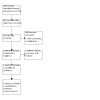


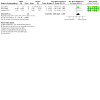
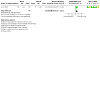
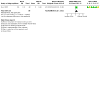
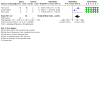
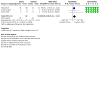
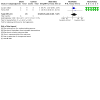



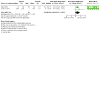

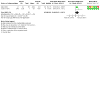
Update of
- doi: 10.1002/14651858.CD014923
References
References to studies included in this review
Kazui 2015 {published and unpublished data}
-
- Kazui H, Miyajima M, Mori E, Ishikawa M, SINPHONI-2 Investigators. Lumboperitoneal shunt surgery for idiopathic normal pressure hydrocephalus (SINPHONI-2): an open-label randomised trial. The Lancet. Neurology 2015;14(6):585-94. - PubMed
Luciano 2023 {published and unpublished data}
Tisell 2011 {published data only}
-
- Tisell M, Tullberg M, Hellström P, Edsbagge M, Högfeldt M, Wikkelsö C. Shunt surgery in patients with hydrocephalus and white matter changes. Journal of Neurosurgery 2011;114(5):1432-8. - PubMed
Toma 2016 {unpublished data only}
-
- Toma AK, Watkins LD. Surgical management of idiopathic normal pressure hydrocephalus: a trial of a trial. British Journal of Neurosurgery 2016;30(6):605. - PubMed
References to studies excluded from this review
Saehle 2014 {published data only}
-
- Saehle T, Farahmand D, Eide PK, Tisell M, Wikkelsö C. A randomized controlled dual-center trial on shunt complications in idiopathic normal-pressure hydrocephalus treated with gradually reduced or "fixed" pressure valve settings. Journal of Neurosurgery 2014;121(5):1257-63. - PubMed
References to studies awaiting assessment
NCT01798641 {unpublished data only}
-
- NCT01798641. A randomized cross-over study for normal pressure hydrocephalus (ARCS NPH) [Efficacy of shunt surgery in normal pressure hydrocephalus: a randomized cross-over study]. clinicaltrials.gov/study/NCT01798641 (first received 26 February 2013).
References to ongoing studies
NCT05081128 {published data only}
-
- NCT05081128. A placebo-controlled efficacy in iNPH shunting (PENS) trial [Efficacy in iNPH shunting (PENS) trial (PENS)]. clinicaltrials.gov/study/NCT05081128 (first received 18 October 2021).
Additional references
Adams 1965
-
- Adams RD, Fisher CM, Hakim S, Ojemann RG, Sweet WH. Symptomatic occult hydrocephalus with "normal" cerebrospinal-fluid pressure. A treatable syndrome. New England Journal of Medicine 1965;273:117-26. - PubMed
Akyea 2021
Andersson 2019
Badhiwala 2015
-
- Badhiwala JH, Nassiri F, Alhazzani W, Selim MH, Farrokhyar F, Spears J, et al. Endovascular thrombectomy for acute ischemic stroke: a meta-analysis. JAMA 2015;314(17):1832-43. - PubMed
Bahar‐Fuchs 2019
Banizs 2005
-
- Banizs B, Pike MM, Millican CL, Ferguson WB, Komlosi P, Sheetz J, et al. Dysfunctional cilia lead to altered ependyma and choroid plexus function, and result in the formation of hydrocephalus. Development (Cambridge, England) 2005;132(23):5329-39. - PubMed
Bluett 2023
Bradley 2015
Børgesen 1982
-
- Børgesen SE, Gjerris FL. The predictive value of conductance to outflow of CSF in normal pressure hydrocephalus. Brain: A Journal of Neurology 1982;105(Pt 1):65-86. - PubMed
Cabral 2011
Carswell 2024
-
- Carswell C. Consensus outcome of RoB signalling questions. Shunting for idiopathic normal pressure hydrocephalus; 2024. zenodo.org/records/10590681.
Covidence [Computer program]
-
- Covidence. Version accessed 16 May 2024. Melbourne, Australia: Veritas Health Innovation, 2024. Available at covidence.org.
Craven 2016
-
- Craven C, Asif H, Farrukh A, Somavilla F, Toma AK, Watkins L. Case series of ventriculopleural shunts in adults: a single-center experience. Journal of Neurosurgery 2016;126(6):2010-6. - PubMed
Deeks 2021
-
- Deeks J, Higgins J, Altman DG. Chapter 10: Analysing data and undertaking meta-analyses. In: Higgins JP, Thomas J, Chandler J, Cumpston M, Li T, Page MJ, et al, editor(s). Cochrane Handbook for Systematic Reviews of Interventions Version 6.2 (updated February 2021). Cochrane, 2021. Available from training.cochrane.org/handbook/archive/v6.2.
Esmonde 2002
Espay 2017
-
- Espay AJ, Da Prat GA, Dwivedi AK, Rodriguez-Porcel F, Vaughan JE, Rosso M, et al. Deconstructing normal pressure hydrocephalus: ventriculomegaly as early sign of neurodegeneration. Annals of Neurology 2017;82(4):503-13. - PubMed
Fernández‐Méndez 2019
Giordan 2018
-
- Giordan E, Palandri G, Lanzino G, Murad MH, Elder BD. Outcomes and complications of different surgical treatments for idiopathic normal pressure hydrocephalus: a systematic review and meta-analysis. Journal of Neurosurgery 2018;131(4):1-13. - PubMed
GRADEpro GDT [Computer program]
-
- GRADEpro GDT. Version accessed 15 May 2024. Hamilton (ON): McMaster University (developed by Evidence Prime), 2024. Available at gradepro.org.
Hakim 1965
-
- Hakim S, Adams RD. The special clinical problem of symptomatic hydrocephalus with normal cerebrospinal fluid pressure. Observations on cerebrospinal fluid hydrodynamics. Journal of the Neurological Sciences 1965;2(4):307-27. - PubMed
Hakim 1976
-
- Hakim S, Venegas JG, Burton JD. The physics of the cranial cavity, hydrocephalus and normal pressure hydrocephalus: mechanical interpretation and mathematical model. Surgical Neurology 1976;5(3):187-210. - PubMed
Halperin 2015
-
- Halperin JJ, Kurlan R, Schwalb JM, Cusimano MD, Gronseth G, Gloss D. Practice guideline: idiopathic normal pressure hydrocephalus: response to shunting and predictors of response: report of the guideline development, dissemination, and implementation subcommittee of the American Academy of Neurology. Neurology 2015;85(23):2063-71. - PMC - PubMed
Hashimoto 2010
Hebb 2001
-
- Hebb AO, Cusimano MD. Idiopathic normal pressure hydrocephalus: a systematic review of diagnosis and outcome. Neurosurgery 2001;49(5):1166-86. - PubMed
Hellström 2012
-
- Hellström P, Klinge P, Tans J, Wikkelsø C. A new scale for assessment of severity and outcome in iNPH. Acta Neurologica Scandinavica 2012;126(4):229-37. - PubMed
Higgins 2021
-
- Higgins J, Li T, Deeks J. Chapter 10: Analysing data and undertaking meta-analyses. In: Higgins JP, Thomas J, Chandler J, Cumpston M, Li T, Page MJ, et al, editor(s). Cochrane Handbook for Systematic Reviews of Interventions Version 6.2 (updated February 2021). Cochrane, 2021. Available from training.cochrane.org/handbook/archive/v6.2.
Higgins 2023
-
- Higgins JP, Savović J, Page MJ, Elbers RG, Sterne JA. Chapter 8: Assessing risk of bias in a randomized trial. In: Higgins JP, Thomas J, Chandler J, Cumpston M, Li T, Page MJ, et al, editor(s). Cochrane Handbook for Systematic Reviews of Interventions Version 6.4 (updated August 2023). Cochrane, 2023. Available from www.training.cochrane.org/handbook.
Horner 1992
-
- Horner SM. Efficacy of intravenous magnesium in acute myocardial infarction in reducing arrhythmias and mortality. Meta-analysis of magnesium in acute myocardial infarction. Circulation 1992;86(3):774-9. - PubMed
Hudson 2019
ICH 1994
-
- Tietje C, Brouder A. International conference on harmonisation of technical requirements for registration of pharmaceuticals for human use. In: Tietje C, Brouder A, editors(s). Handbook of Transnational Economic Governance Regimes. Brill | Nijhoff, 2010:1041-53.
Ishikawa 2004
ISIS‐4
-
- ISIS-4 (Fourth International Study of Infarct Survival) Collaborative Group. ISIS-4: a randomised factorial trial assessing early oral captopril, oral mononitrate, and intravenous magnesium sulphate in 58,050 patients with suspected acute myocardial infarction. Lancet 1995;345(8951):669-85. - PubMed
Jaraj 2016
Jaraj 2017
-
- Jaraj D, Rabiei K, Marlow T, Jensen C, Skoog I, Wikkelsø C. Estimated ventricle size using Evans index: reference values from a population-based sample. European Journal of Neurology 2017;24(3):468-74. - PubMed
Kimihira 2020
-
- Kimihira L, Iseki C, Takahashi Y, Sato H, Kato H, Kazui H, et al. A multi-center, prospective study on the progression rate of asymptomatic ventriculomegaly with features of idiopathic normal pressure hydrocephalus on magnetic resonance imaging to idiopathic normal pressure hydrocephalus. Journal of the Neurological Sciences 2020;419:1-5. - PubMed
Kitagaki 1998
Klinge 2012
Kockum 2018
-
- Kockum K, Lilja-Lund O, Larsson E -M, Rosell M, Söderström L, Virhammar J, et al. The idiopathic normal-pressure hydrocephalus radscale: a radiological scale for structured evaluation. European Journal of Neurology 2018;25(3):569-76. - PubMed
Kockum 2020
Lam 1997
Lavados 2021
-
- Lavados PM, Hoffmeister L, Moraga AM, Vejar A, Vidal C, Gajardo C, et al. Incidence, risk factors, prognosis, and health-related quality of life after stroke in a low-resource community in Chile (ÑANDU): a prospective population-based study. Lancet Global Health 2021;9(3):e340-51. [DOI: 10.1016/S2214-109X(20)30470-8] - DOI - PubMed
Louvi 2011
Macki 2020
-
- Macki M, Mahajan A, Shatz R, Air EL, Novikova M, Fakih M, et al. Prevalence of alternative diagnoses and implications for management in idiopathic normal pressure hydrocephalus patients. Neurosurgery 2020;87(5):999-1007. - PubMed
Malm 2006
-
- Malm J, Eklund A. Idiopathic normal pressure hydrocephalus. Practical Neurology 2006;6(1):14-27.
Moher 2009
Mollan 2018
Momjian 2004
-
- Momjian S, Owler BK, Czosnyka Z, Czosnyka M, Pena A, Pickard JD. Pattern of white matter regional cerebral blood flow and autoregulation in normal pressure hydrocephalus. Brain: A Journal of Neurology 2004;127(Pt 5):965-72. - PubMed
Morimoto 2019
Müller‐Schmitz 2020
-
- Müller‐Schmitz K, Krasavina‐Loka N, Yardimci T, Lipka T, Kolman AG, Robbers S, et al. Normal pressure hydrocephalus associated with Alzheimer's disease. Annals of Neurology 2020;88(4):703-11. - PubMed
Nakajima 2021
Narita 2016
Ogino 2006
-
- Ogino A, Kazui H, Miyoshi N, Hashimoto M, Ohkawa S, Tokunaga H, et al. Cognitive impairment in patients with idiopathic normal pressure hydrocephalus. Dementia and Geriatric Cognitive Disorders 2006;21(2):113-9. - PubMed
Ohara 2020
-
- Ohara M, Hattori T, Yokota T. Progressive supranuclear palsy often develops idiopathic normal pressure hydrocephalus-like magnetic resonance imaging features. European Journal of Neurology 2020;27(10):1930-6. - PubMed
Relkin 2005
-
- Relkin N, Marmarou A, Klinge P, Bergsneider M, Black PMcL. Diagnosing idiopathic normal-pressure hydrocephalus. Neurosurgery 2005;57(3 Suppl):S4-16; discussion ii-v. - PubMed
RevMan 2024 [Computer program]
-
- Review Manager (RevMan). Version 7.10.3. The Cochrane Collaboration, 2024. Available at revman.cochrane.org.
Ringstad 2017
Román 2018
-
- Román GC, Verma AK, Zhang YJ, Fung SH. Idiopathic normal-pressure hydrocephalus and obstructive sleep apnea are frequently associated: a prospective cohort study. Journal of the Neurological Sciences 2018;395:164-8. - PubMed
Sakakibara 2008
-
- Sakakibara R, Kanda T, Sekido T, Uchiyama T, Awa Y, Ito T, et al. Mechanism of bladder dysfunction in idiopathic normal pressure hydrocephalus. Neurourology and Urodynamics: Official Journal of the International Continence Society 2008;27(6):507-10. - PubMed
Saper 2017
-
- Saper CB. Is there even such a thing as "Idiopathic normal pressure hydrocephalus"? Annals of Neurology 2017;82(4):514-5. - PubMed
Schünemann 2021a
-
- Schünemann H, Higgins J, Vist G, Glasziou P, Akl E, Skoetz N, et al. Chapter 14: Completing ‘Summary of findings’ tables and grading the certainty of the evidence. In: Higgins JP, Thomas J, Chandler J, Cumpston M, Li T, Page MJ, et al, editor(s). Cochrane Handbook for Systematic Reviews of Interventions Version 6.2 (updated February 2021). Cochrane, 2021. Available from training.cochrane.org/handbook/archive/v6.2.
Schünemann 2021b
-
- Schünemann H, Vist G, Higgins J, Santesso N, Deeks J, Glasziou P, et al. Chapter 15: Interpreting results and drawing conclusions. In: Higgins JP, Thomas J, Chandler J, Cumpston M, Li T, Page MJ, et al, editor(s). Cochrane Handbook for Systematic Reviews of Interventions Version 6.2 (updated February 2021). Cochrane, 2021. Available from training.cochrane.org/handbook/archive/v6.2.
Silverberg 2003
-
- Silverberg GD, Mayo M, Saul T, Rubenstein E, McGuire D. Alzheimer's disease, normal-pressure hydrocephalus, and senescent changes in CSF circulatory physiology: a hypothesis. The Lancet. Neurology 2003;2(8):506-11. - PubMed
Sterne 2019
-
- Sterne JA, Savović J, Page MJ, Elbers RG, Blencowe NS, Boutron I, et al. RoB 2: a revised tool for assessing risk of bias in randomised trials. BMJ 2019;366:l4898. - PubMed
Takeuchi 2019
Toma 2013
-
- Toma AK, Papadopoulos MC, Stapleton S, Kitchen ND, Watkins LD. Systematic review of the outcome of shunt surgery in idiopathic normal-pressure hydrocephalus. Acta Neurochirurgica 2013;155(10):1977-80. - PubMed
Vanhala 2019
Williams 2022
-
- Williams MA, Nagel SJ, Golomb J, Jensen H, Dasher NA, Holubkov R, et al. Safety and effectiveness of the assessment and treatment of idiopathic normal pressure hydrocephalus in the Adult Hydrocephalus Clinical Research Network. Journal of Neurosurgery 2022;137(5):1-13. - PubMed
Yang 2021
Yasar 2017
Zaccaria 2020
-
- Zaccaria V, Bacigalupo I, Gervasi G, Canevelli M, Corbo M, Vanacore N, et al. A systematic review on the epidemiology of normal pressure hydrocephalus. Acta Neurologica Scandinavica 2020;141(2):101-14. - PubMed
References to other published versions of this review
Publication types
MeSH terms
LinkOut - more resources
Full Text Sources

